WE RIDE TWISTED DEVELOPMENT’S WORLD TWO-STROKE CHAMPIONSHIP YZ300

BY JOSH MOSIMAN
Josh Grant showed up at last year’s 2020 World Two-Stroke Championship on a 2003 Honda CR250 with his former Factory Connection mechanic, Naveen, spinning the wrenches. He was competitive, but fourth place wasn’t where most people expected him to finish, as he’s the guy to beat at Glen Helen. Fast-forward to 2021. Josh wanted redemption, and this time his two young sons would be racing, too. The Grant brothers, Easton and Wyatt, have a family sponsorship alongside their dad from Yamaha and Simi Valley Cycles. Unfortunately, with the increased demand for motorcycles combined with delays at the Japanese production facilities and with shipping, getting a 2021 YZ250 in time for the World Two-Stroke Championship was impossible.
INSTEAD OF GIVING ME DYNO NUMBERS, HE LECTURED ME ON THE IMPORTANCE OF USABLE POWER AND THE FACT THAT HORSEPOWER NUMBERS ARE FUTILE UNLESS THE POWER CURVE IS RIGHT.

The relationship between Josh Grant and Twisted Development’s Jamie Ellis goes back a few years. After Josh lost his spot on the factory Kawasaki team in 2016, Jamie built Josh a Suzuki RM-Z450 that he used to score seventh place at the Daytona Supercross—a race that helped him get back onto the Kawasaki team. To further cement the connection, Fasthouse, the gear sponsor of the Grant family and the host sponsor of the World Two-Stroke Championship, also had a stake in the game. They want to see popular AMA Pros like Josh Grant racing two-strokes again, and they want their sponsored riders getting exposure at the race. So, it was only natural that Fasthouse and Jamie Ellis would come together to put Josh Grant on a Yamaha.
Jamie had a 2005 Yamaha YZ250 sitting in his shop that he acquired when he was trying to sell a Kawasaki Z125 street bike. Jamie bought the Z125 to help him get in and out of the sardine-like Mammoth Mountain Motocross parking lot. Before long, he had three of the miniature street-legal Kawasaki pit bikes. He needed one, but he bought two more in a package deal that he couldn’t pass up. Later, while trying to sell the third Kawasaki Z125 that he didn’t need, the 2005 YZ250 came into the picture. “The YZ250 still had the original tires with the nipples on them and the original chain and sprockets. It had been in a time warp, sitting dormant since 2005,” said Jamie. He was happy to be rid of the third Z125 and figured he could sell the pristine 2005 YZ250 much easier. As the story goes, eventually that became Josh Grant’s race bike.

The Open Pro class at the World Two-Stroke Championship is the premier race of the day, and it has been won by a 300cc or 325cc big-bore the last two years, so Jamie decided to give Josh Grant the extra cubic centimeters. He started with the Athena 300cc kit, checked the port timing, milled the head, and added a thicker base gasket to get the compression and squish where he wanted it. Jamie explained, “It was a pretty straight-forward build, as any two-stroke would be. I think two-strokes are more about hard work than they are about theory.” Jamie explained that two-strokes aren’t just about raising the exhaust port to get more power. “You have to move everything around. You can be 0.2mm off on your base gasket and power isn’t awesome, and then go the other way and it comes to life.” Jamie said that he actually found an extra 5 horsepower on the dyno after his first test day with Josh at Glen Helen.
MXA CARBON DATES THE GOOD YZ250S BACK TO 2006. THAT WAS THE FIRST YEAR IT CAME WITH THE GREAT KYB SSS FORKS. BUT, THE 2005 YZ250 IS ALMOST AS GOOD AS THE 2006, AS THAT WAS THE FIRST YEAR OF YAMAHA’S PLUG-AND-PLAY ALUMINUM FRAME AND NEW ENGINE.
MXA tried to squeeze the final peak horsepower numbers out of Jamie, but he wouldn’t spill the beans. This was the first of two power secrets he kept from us, and instead of giving me dyno numbers, he went on to lecture me on the importance of usable power and the fact that horsepower numbers are futile unless the power curve is right. When getting into a two-stroke build, Jamie looks to see where the usable power is and then works to manipulate and move the curve. “You need a good top number to make good power, but more important, you want ridability and a hooked-up feeling out of the corners. If the peak isn’t broad, you get a small powerband that makes it difficult to use on the track.” Twisted Development has built two-strokes for Haiden Deegan all throughout his young Amateur career (including his KTM 112 Supermini we tested in our August 2020 issue). “We’ve won Championships along the way, chasing him through everything he’s raced: 50s, 65s, 85s, 112s and now 125s. Our spec gets better every time we work hard and every time we have a customer who needs something.”

Looking back on the KTM 300SX that Twisted built for me to compete with at the same race last year (as seen in the December 2020 issue), Jamie said that one thing he would have done differently was to use a Lectron carburetor instead of the stock Mikuni TMX carb. For Josh Grant’s YZ300 build, Twisted tested a multitude of carbs before deciding on the Lectron. “It excels on the 300 two-strokes. The fuel goes through a metering rod instead of an orifice, and it atomizes better. It’s arguable that a regular carburetor will have a better response, but when you’re dealing with 300s, the smooth lug-ability is huge, and it goes over the top better.” For a 125 or Supermini, Twisted doesn’t use a Lectron, but they like it for the big-bore two-strokes. The general Lectron feedback is that it isn’t as sharp and snappy off the bottom, because it isn’t coming through a fixed orifice jet. Instead, the fuel is let into the carb when the slide opens and closes, because the metering rod is connected to the slide and, as the slide lifts, the rod opens the hole to allow more fuel in. The Lectron learning curve is steep for carb guys, but it’s easy to tune after you figure out the install height and tapers on the metering rods.
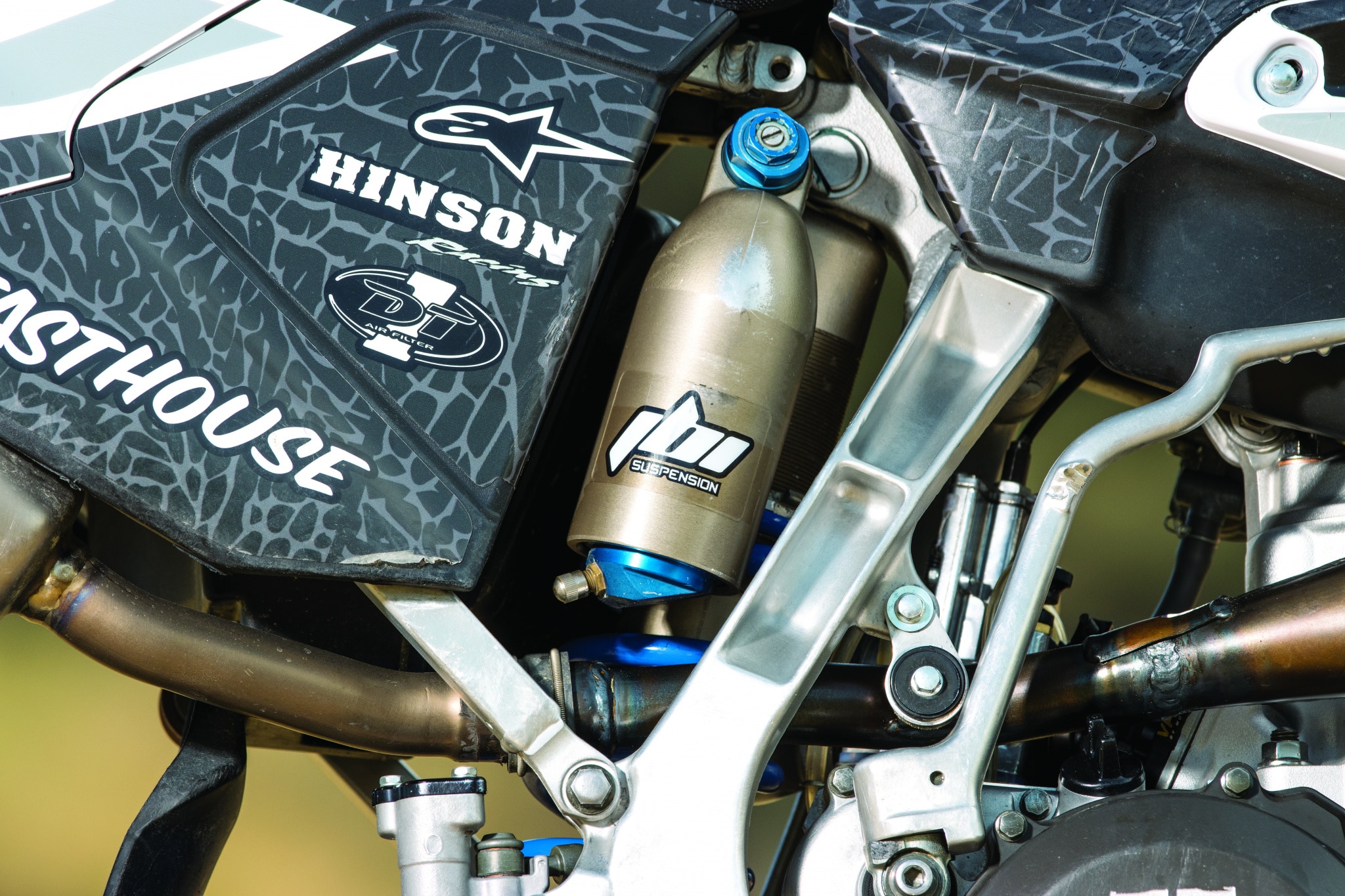
Typically, MXA carbon dates the good YZ250s back to 2006, because that was the first year it came with the great KYB SSS forks. But, the 2005 YZ250 is almost as good as the 2006, as that was the first year of Yamaha’s plug-and-play aluminum frame and new engine. The only fault with the 2005 is its old-style Kayaba forks. Instead of bolting on newer YZ250 forks or using a conversion kit for Josh Grant’s bike, Jamie put a spare set of Yamaha YZ250F forks on the race bike. X-Trig custom-machined a YZ250 steering stem for its YZ250F clamps, plus Twisted Development had to use a YZ250F front wheel for its bigger axle. Jamie stole the Kayaba shock off his personal YZ250 to use on Josh’s race bike, because his shock had an 18mm-diameter shock shaft instead of the stock 16mm one. As for the rest of the bike, Jamie used a new spec test fuel from VP (this was his second secret). He added a full Hinson clutch, Works Connection Pro Launch holeshot device, Renthal handlebars/sprockets, DT1 air filter and Dunlop MX33 tires (with a 110 on the rear).
ROBBIE HADN’T PLANNED ON RACING THE TWO-STROKE RACE, SINCE HE WAS IN THE MIDDLE OF RACING THE AMA 250 WEST SUPERCROSS SERIES AND WAS ONLY IN TOWN FOR ONE WEEKEND.
On the same day that Josh Grant tested the YZ300, before Jamie found the extra power, the team was also testing with JB Covington of JBI Suspension. JBI is located directly across the parking lot from Twisted Development at Murrieta, California’s famous Innovation Court cul-de-sac. On this same street, you can find KTM, Husqvarna, GasGas, Kiska, WP, VP, Muc-Off Honda, MindFX, DT1, Panic Rev and more of the industry movers and shakers. It is very convenient, as there is no shipping or driving, just a 100-foot walk from company to company. JBI knew that Josh would want his suspension settings stiff. During their first day of testing, Josh Grant’s wicked-fast speed down Glen Helen’s big hills put a lot of pressure on the forks and shock, causing them to blow through their stroke. As always, the suspension clickers are great for fine tuning and testing, and although they didn’t solve every problem, they did make the bike feel better each time they went stiffer—giving JBI the direction to go for test day number two.
JBI decided to go a full spring rate stiffer on the forks and shock to provide the hold-up the YZ300 needed to come down the hills at speeds only Josh Grant would be comfortable with. JBI ended up with 0.47 N/m fork springs and a 5.4 N/m spring on the shock. As a byproduct, the increased spring rates also worked to stiffen the compression by 12 percent, without even changing the shim settings at the valves. On test day number two, Josh had the ability to open up the compression clickers to soften the suspension if the conditions called for it.

Sadly, after many hours of coordinating, developing, testing and preparing for the big show, Josh Grant never actually got to go to the starting line on his Twisted Development-built Yamaha YZ300. He crashed in practice on the morning of the race. With six broken ribs and a punctured lung, Josh Grant’s day was over; however, his bike’s day was just getting started. Robbie Wageman, the 2019 World Two-Stroke Open Pro Champion, had come to Glen Helen to watch his older brother R.J. race and to oversee their family’s beef-jerky vendor booth. Robbie hadn’t planned on racing the two-stroke race, since he was in the middle of racing the AMA 250 West Supercross series and was only in town for one weekend. But, one hour before the gate was set to drop, Robbie asked Jamie if he could fill in for Josh Grant. The shift-side engine case had been broken in Josh’s crash, the handlebars were bent, and the Pro Circuit silencer was destroyed. Jamie JB-Welded the hole in the cases near the countershaft sprocket, straightened the handlebars and replaced the Pro Circuit silencer with an FMF silencer. Thus, the YZ300 had a Pro Circuit pipe with an FMF silencer.
When I went to the gate for the Open Pro class with my stock Husqvarna TC250, I was flabbergasted to see Robbie Wageman all geared up. After all, I had just seen him shortly before in street clothes explaining to me that he wasn’t going to race. Off the start, I came into the first turn hot with 30 other Open Pro riders behind me, but Robbie Wageman had a wheel on me, and Dare Demartile snuck up on the inside. I watched Wageman lead, and I couldn’t believe it! Here was a guy who hadn’t planned on racing, had missed practice, was riding on Josh Grant’s unfamiliar suspension, and was riding on a YZ300 that had the subframe pushed 3 inches to the right. The only thing that made sense was that Robbie was comfortable with Josh’s stiff suspension because he came straight from the Supercross series and felt at home with it. I ran third for most of the race and eventually finished fourth when my buddy Jerry Robin passed me on MXA’s Yamaha YZ250. Wageman went on to win the first moto and finish second in the next one to take the overall win on Josh Grant’s Twisted Development Yamaha YZ300.
It was natural for Jody and Daryl to assign me to be the test rider of record when we took the World Championship-winning YZ300 to Glen Helen the next week. After all, I had eaten roost off this bike at the race. I already knew how fast it was after drag racing it into Talladega multiple times on MXA’s Husky TC250, and I knew it handled well, because the track was rough and Robbie was able to win on it.
I knew the suspension had to be very stiff for Robbie, as he is a smaller guy, but I figured it would be good for me. Well, I was wrong, very wrong. It was unbelievably stiff! I definitely prefer my suspension on the opposite side of the spectrum. It wasn’t that the suspension was bad; it was actually really good! I could appreciate it whenever I pushed hard and I was able to lay down fast laps, but the suspension only worked well when I went all out. If I wanted to cruise to save some energy, I could feel every bump on the track. I knew that the spring rates were too stiff for me, because the suspension rode high in the stroke. I thought maybe Josh Grant was heavier than I am, but after speaking with JB Covington, I learned that we were the same weight.
IT WAS NATURAL FOR JODY AND DARYL TO ASSIGN ME TO BE THE TEST RIDER WHEN WE TOOK THE WORLD CHAMPIONSHIP-WINNING YZ300 TO GLEN HELEN THE NEXT WEEK. AFTER ALL, I HAD EATEN ROOST OFF THIS BIKE AT THE RACE.
As for the power, the Twisted Development-tuned Athena 300cc big-bore kit with its Lectron carb was smooth. It was a bit sluggish off the bottom, but once the power came alive, it was incredibly fast. I could ride a gear higher through the corners, lugging the rpm to get better traction. It didn’t take any clutch work to get up and go, but it also didn’t pull my arms out of their sockets up the hills. I was in love with the power of the YZ300, but I wouldn’t have been able to hold onto it for as long as Robbie did. Nowadays, I still race Pro, and I’m still serious about winning; but, I’ve learned to enjoy the benefits of plush suspension, and I don’t get an ego boost from being the guy with the stiffest stuff anymore.


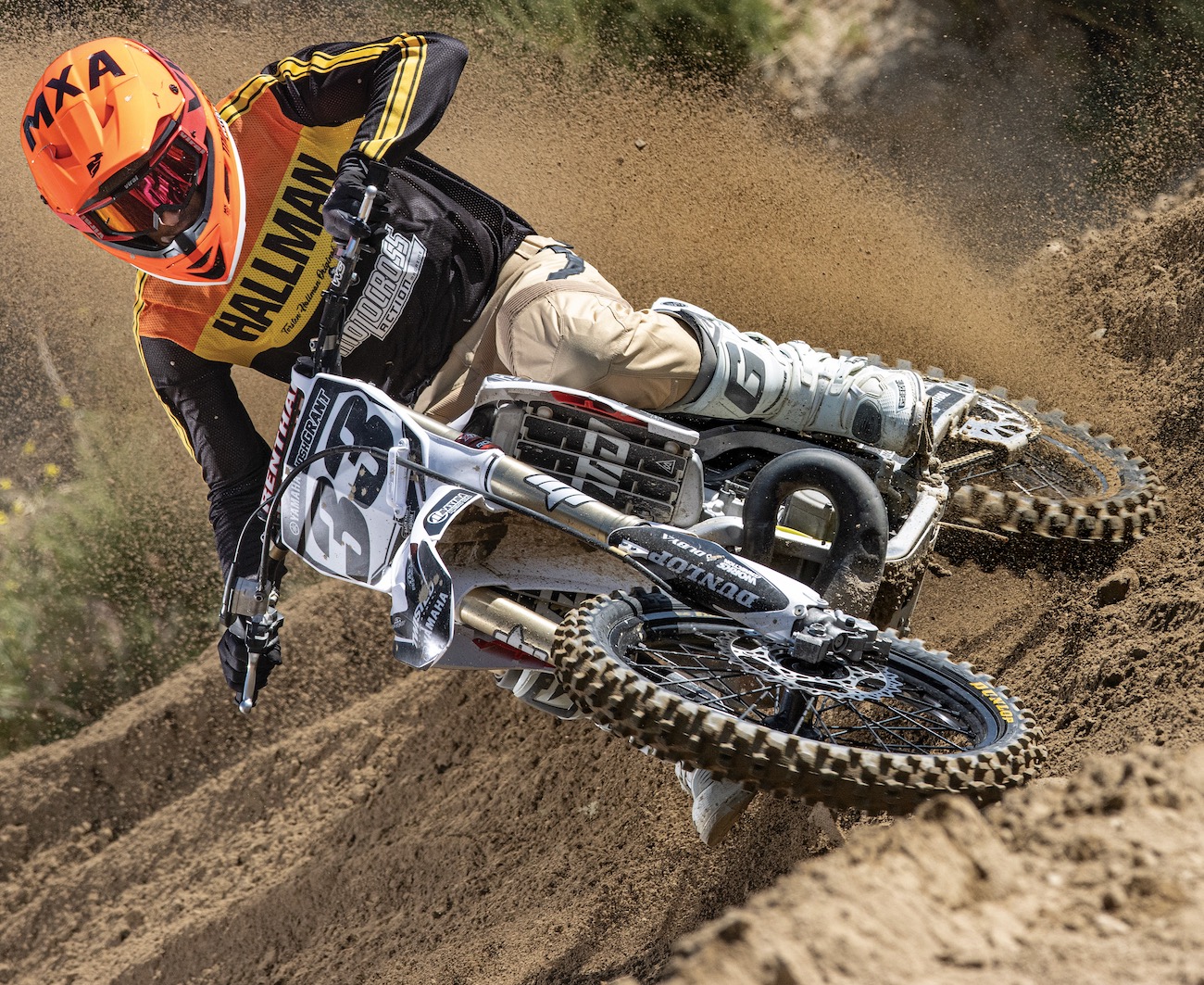

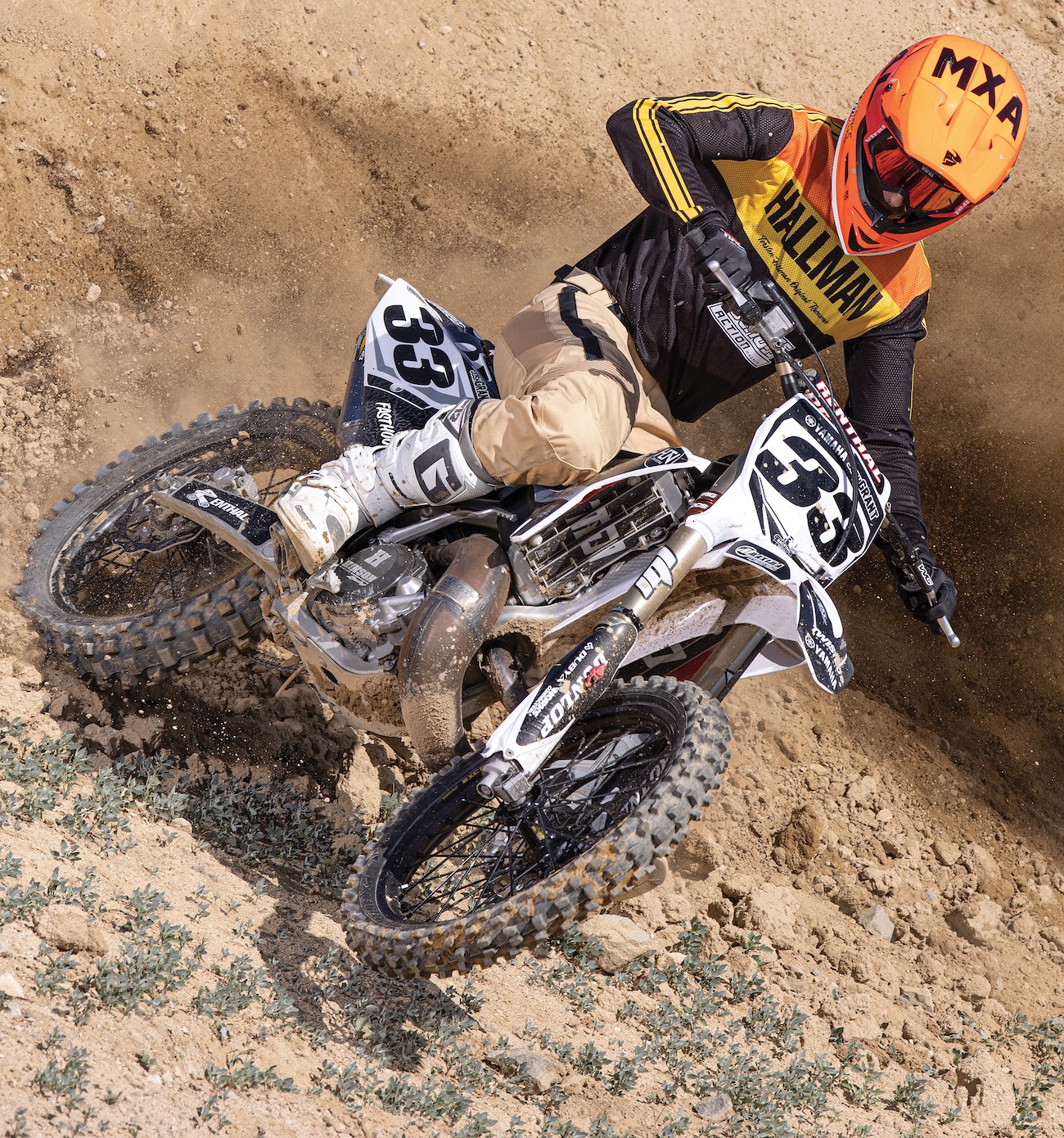

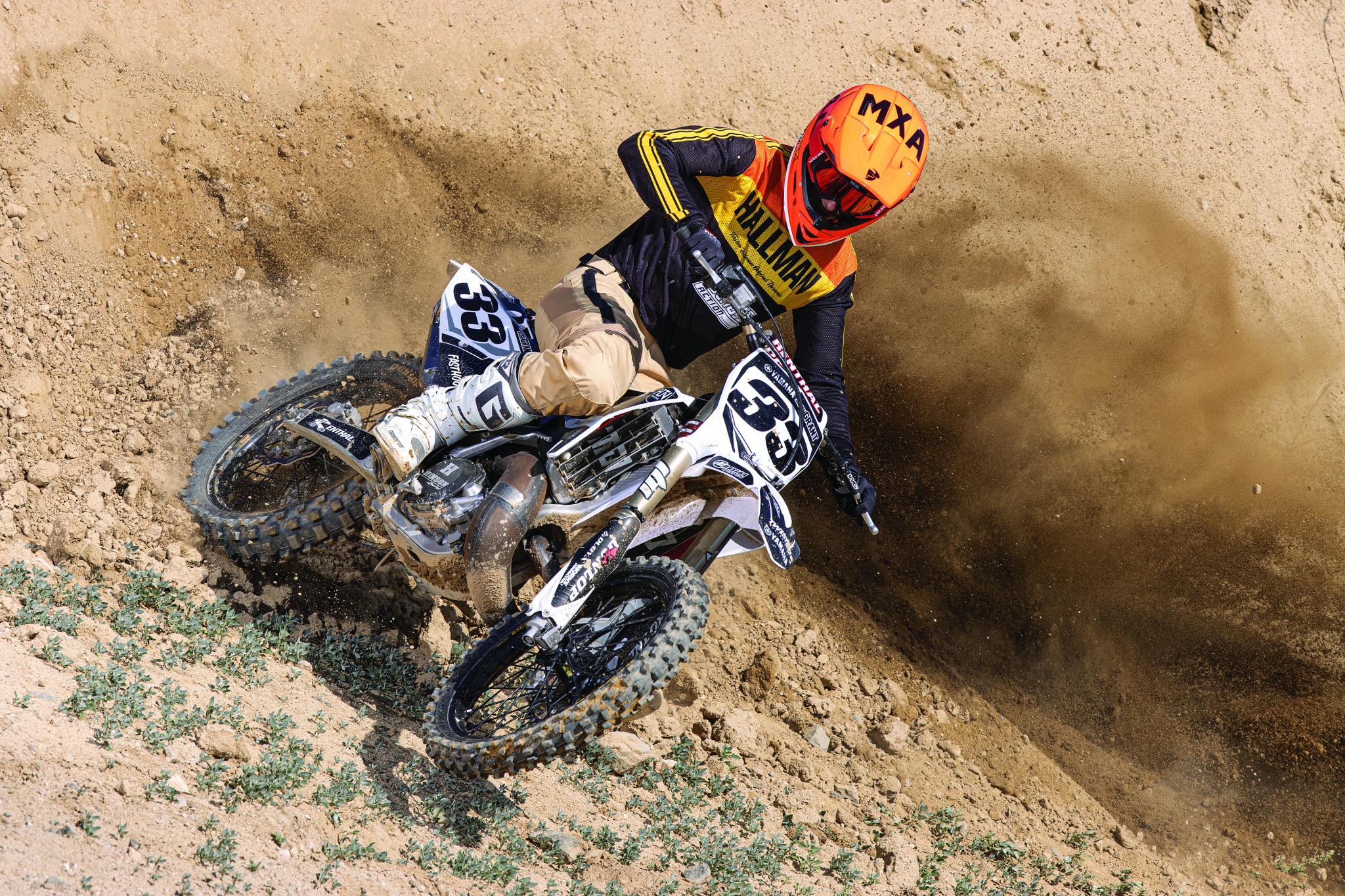
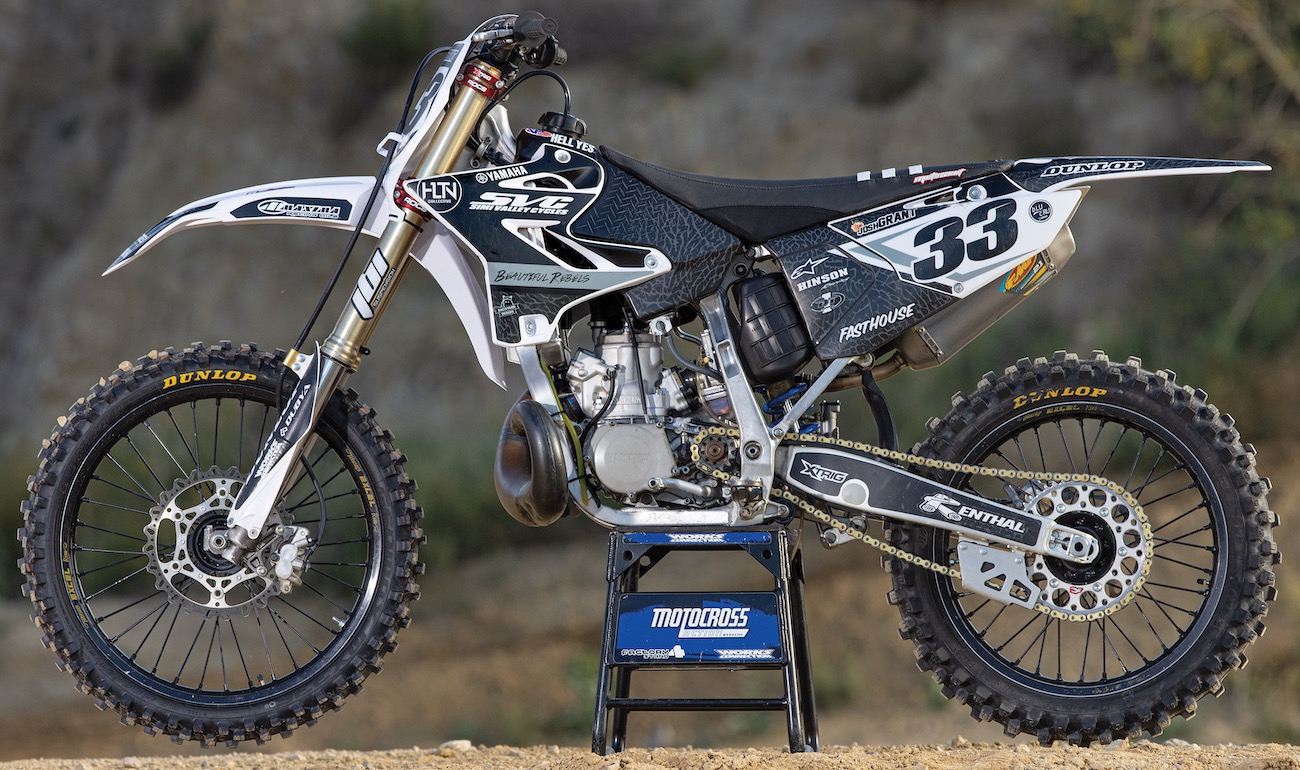


Comments are closed.